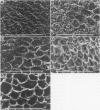Abstract
Capsaicin, the pungent ingredient of chilli, is gastroprotective against experimental gastric injury when given intragastrically. Epidemiological and clinical data suggest that chilli ingestion may have a beneficial effect on human peptic ulcer disease. This study showed a gastroprotective effect of intragastric capsaicin, in doses of 2 and 5 mg, on ethanol induced gastric mucosal injury using macroscopic, histological, scanning electron microscopic, and biochemical indices. Subcutaneous administration of 2 mg of capsaicin had the same gastroprotective effect as intragastric administration. Acute intragastric administration and chronic ingestion of chilli powder in doses comparable with that consumed in humans (up to 200 mg in single doses or 200 mg daily for four weeks) likewise protected the gastric mucosa. Both the mucosa and gastric juice had higher mucus contents when capsaicin or chilli rather than saline or solvent was used before ethanol challenge. In control animals capsaicin also increased gastric juice mucus content although the mucosal content was unaffected. Increased gastric mucus production may therefore be one mechanism by which capsaicin and chilli exert their gastroprotective effect although an alternative explanation is that the reduction in mucosal mucus depletion is secondary to the protective effect of capsaicin and chilli.
Full text
PDF
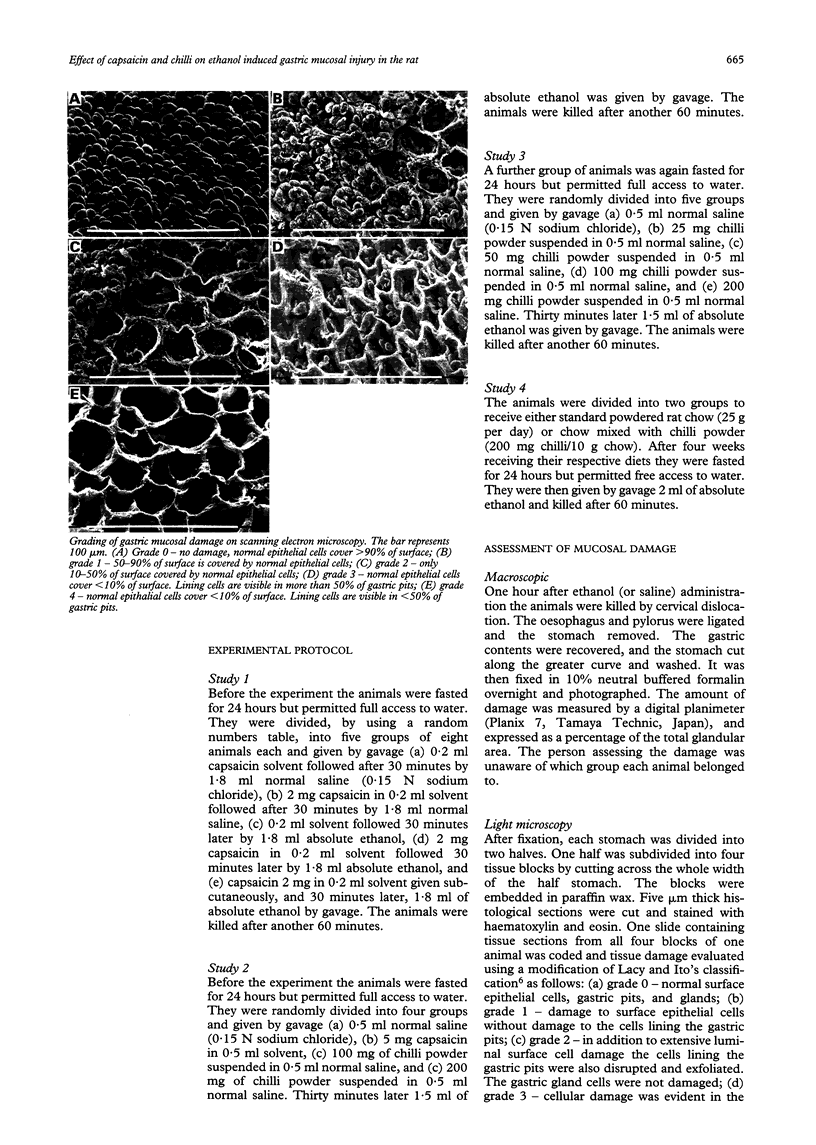
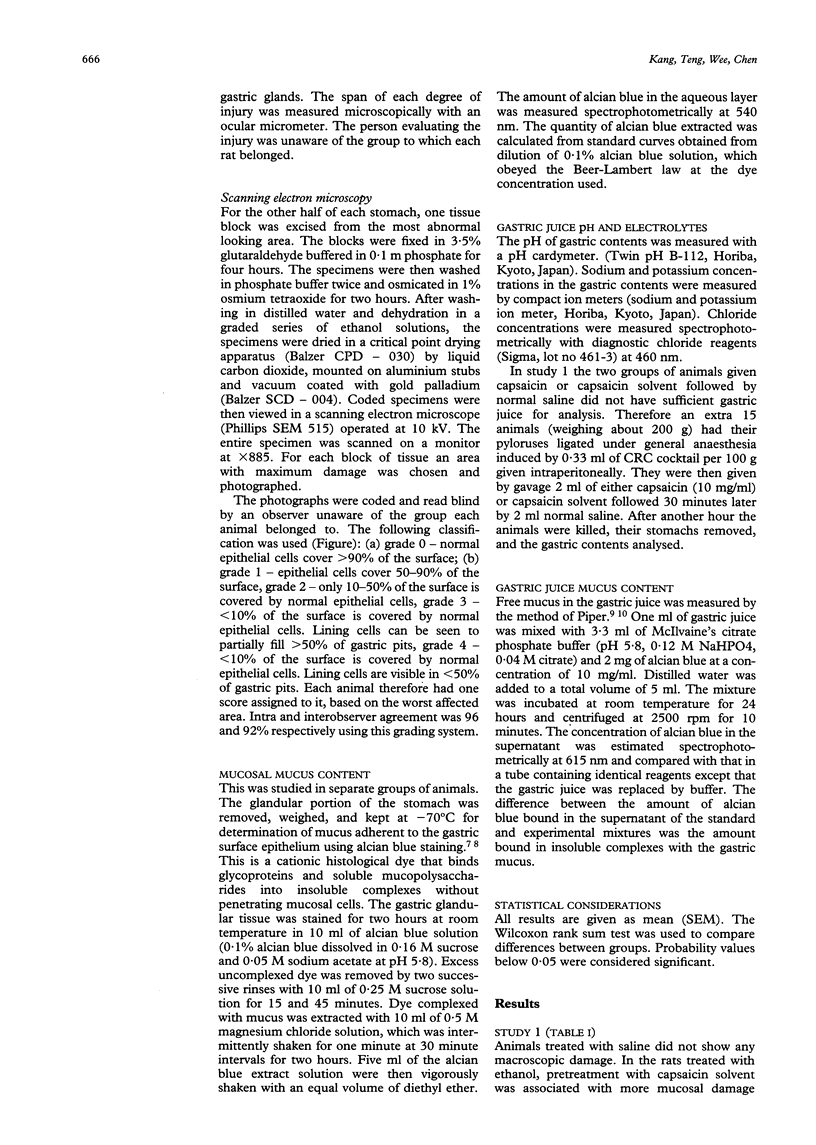

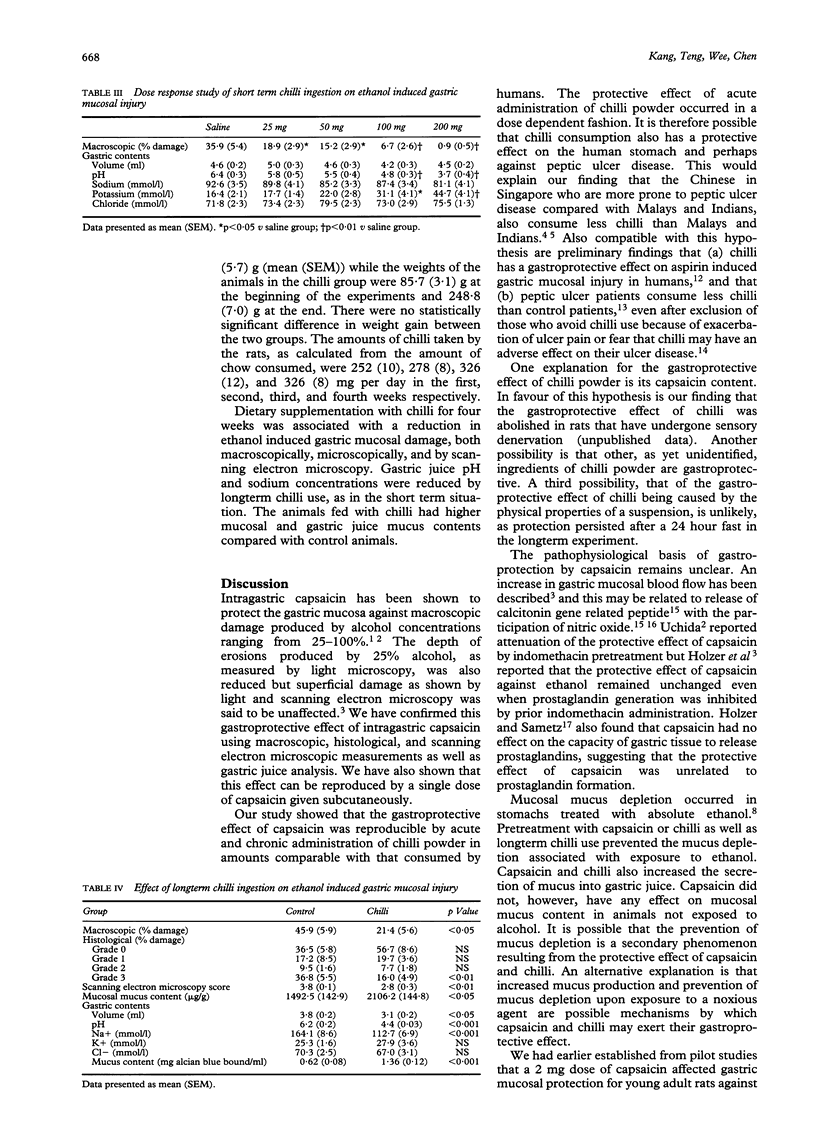
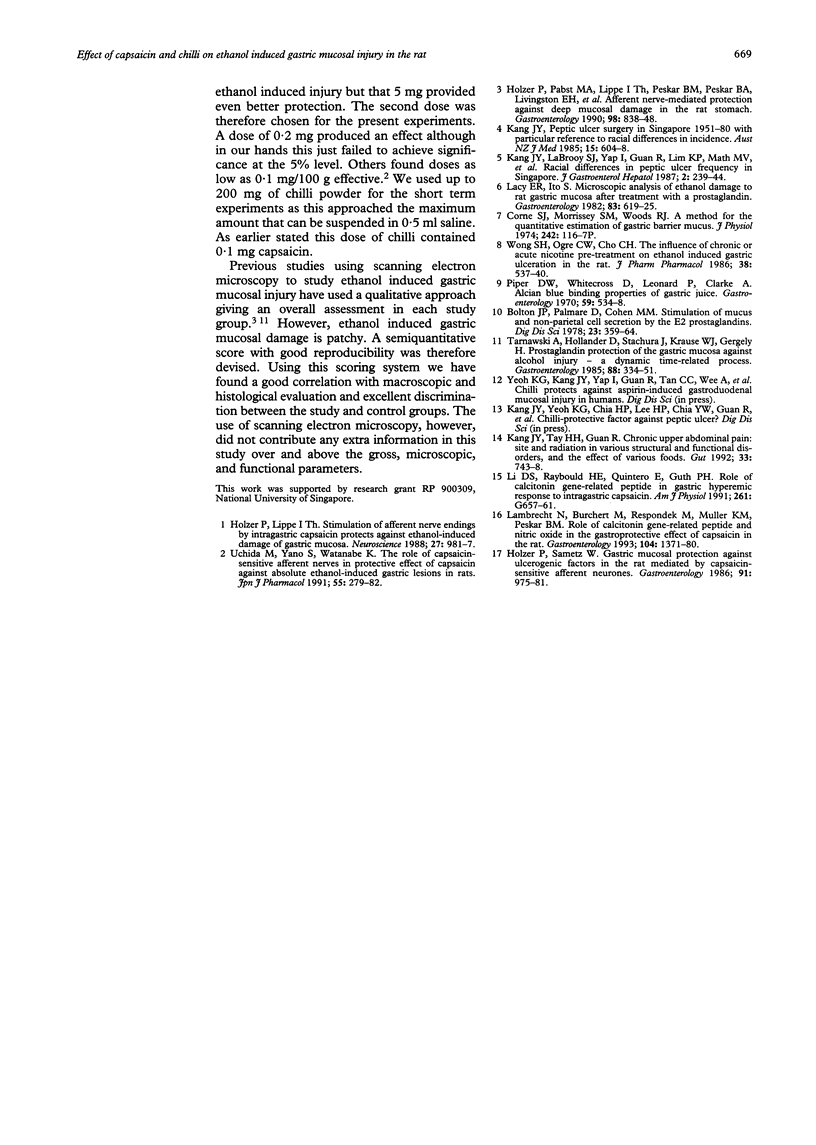
Images in this article
Selected References
These references are in PubMed. This may not be the complete list of references from this article.
- Bolton J. P., Palmer D., Cohen M. M. Stimulation of mucus and nonparietal cell secretion by the E2 prostaglandins. Am J Dig Dis. 1978 Apr;23(4):359–364. doi: 10.1007/BF01072421. [DOI] [PubMed] [Google Scholar]
- Holzer P., Lippe I. T. Stimulation of afferent nerve endings by intragastric capsaicin protects against ethanol-induced damage of gastric mucosa. Neuroscience. 1988 Dec;27(3):981–987. doi: 10.1016/0306-4522(88)90201-1. [DOI] [PubMed] [Google Scholar]
- Holzer P., Pabst M. A., Lippe I. T., Peskar B. M., Peskar B. A., Livingston E. H., Guth P. H. Afferent nerve-mediated protection against deep mucosal damage in the rat stomach. Gastroenterology. 1990 Apr;98(4):838–848. doi: 10.1016/0016-5085(90)90005-l. [DOI] [PubMed] [Google Scholar]
- Holzer P., Sametz W. Gastric mucosal protection against ulcerogenic factors in the rat mediated by capsaicin-sensitive afferent neurons. Gastroenterology. 1986 Oct;91(4):975–981. doi: 10.1016/0016-5085(86)90702-x. [DOI] [PubMed] [Google Scholar]
- Kang J. Y. Peptic ulcer surgery in Singapore, 1951-80, with particular reference to racial differences in incidence. Aust N Z J Med. 1985 Oct;15(5):604–608. [PubMed] [Google Scholar]
- Kang J. Y., Tay H. H., Guan R. Chronic upper abdominal pain: site and radiation in various structural and functional disorders and the effect of various foods. Gut. 1992 Jun;33(6):743–748. doi: 10.1136/gut.33.6.743. [DOI] [PMC free article] [PubMed] [Google Scholar]
- Lacy E. R., Ito S. Microscopic analysis of ethanol damage to rat gastric mucosa after treatment with a prostaglandin. Gastroenterology. 1982 Sep;83(3):619–625. [PubMed] [Google Scholar]
- Lambrecht N., Burchert M., Respondek M., Müller K. M., Peskar B. M. Role of calcitonin gene-related peptide and nitric oxide in the gastroprotective effect of capsaicin in the rat. Gastroenterology. 1993 May;104(5):1371–1380. doi: 10.1016/0016-5085(93)90345-d. [DOI] [PubMed] [Google Scholar]
- Li D. S., Raybould H. E., Quintero E., Guth P. H. Role of calcitonin gene-related peptide in gastric hyperemic response to intragastric capsaicin. Am J Physiol. 1991 Oct;261(4 Pt 1):G657–G661. doi: 10.1152/ajpgi.1991.261.4.G657. [DOI] [PubMed] [Google Scholar]
- Piper D. W., Whitecross D., Leonard P., Clarke A. Alcian blue binding properties of gastric juice. Gastroenterology. 1970 Oct;59(4):534–538. [PubMed] [Google Scholar]
- Tarnawski A., Hollander D., Stachura J., Krause W. J., Gergely H. Prostaglandin protection of the gastric mucosa against alcohol injury--a dynamic time-related process. Role of the mucosal proliferative zone. Gastroenterology. 1985 Jan;88(1 Pt 2):334–352. doi: 10.1016/s0016-5085(85)80188-8. [DOI] [PubMed] [Google Scholar]
- Uchida M., Yano S., Watanabe K. The role of capsaicin-sensitive afferent nerves in protective effect of capsaicin against absolute ethanol-induced gastric lesions in rats. Jpn J Pharmacol. 1991 Feb;55(2):279–282. doi: 10.1254/jjp.55.279. [DOI] [PubMed] [Google Scholar]
- Wong S. H., Ogle C. W., Cho C. H. The influence of chronic or acute nicotine pretreatment on ethanol-induced gastric ulceration in the rat. J Pharm Pharmacol. 1986 Jul;38(7):537–540. doi: 10.1111/j.2042-7158.1986.tb04633.x. [DOI] [PubMed] [Google Scholar]



